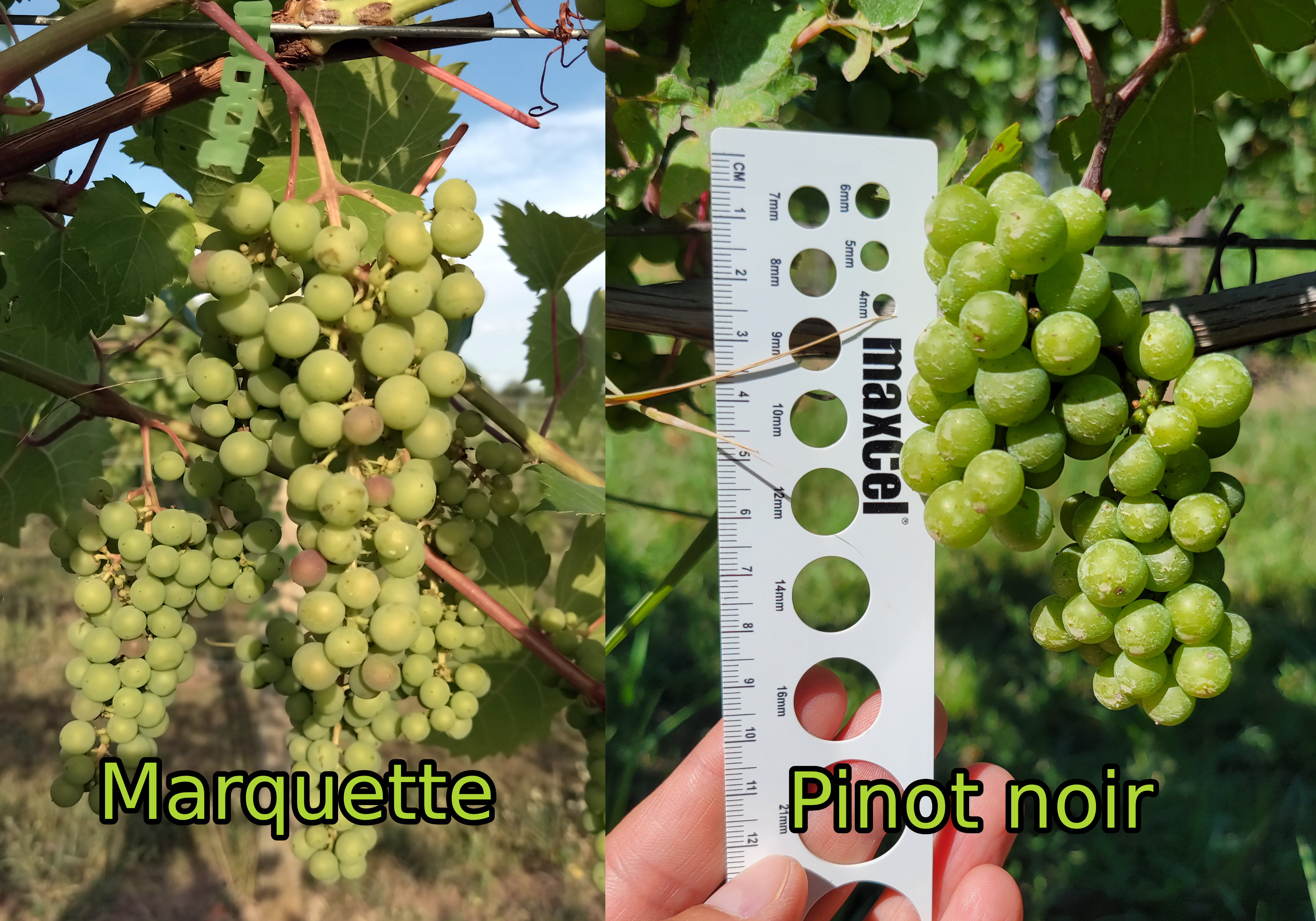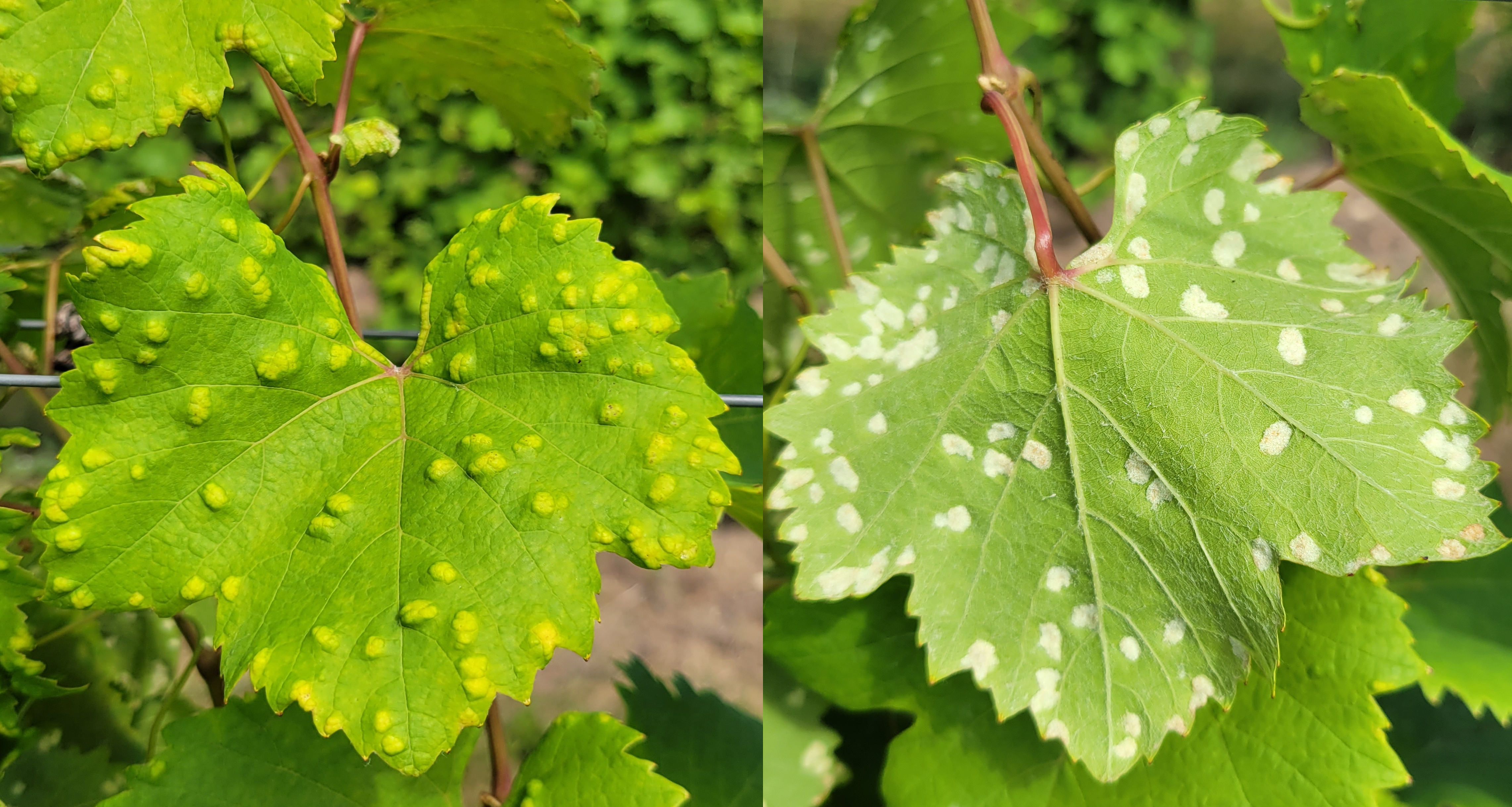Michigan grape scouting report – August 9, 2023
Veraison unfolds in northwest Michigan, initiating the harvest celebration.

Weather
Click below for detailed seven-day forecasts for various grape production regions.
Southwest
Southeast
Northwest
Watch the Agricultural Weather Outlook
Report on growing degree days (GDD)
The following table summarizes the GDD 50 degrees Fahrenheit for the current week and the previous week, as well as the accumulated GDD for each location.
|
Michigan grape growing regions |
Current GDD 50 F |
GDD 50 F last week |
Collected the past week |
|
Benton Harbor (SWMREC) |
1814 |
1676 |
138 |
|
Fennville |
1647 |
1511 |
136 |
|
Lawton |
1810 |
1673 |
137 |
|
1761.7 |
1625.8 |
135.9 |
|
|
Romeo |
1652 |
1522 |
130 |
|
1690.6 |
1557.8 |
132.8 |
|
|
Old Mission |
1420 |
1286 |
134 |
|
Petoskey |
1415 |
1287 |
128 |
|
Traverse City (NWMHRS) |
1560 |
1423 |
137 |
|
1437 |
1309.3 |
127.7 |
The latest GDD data for Michigan grape growing regions shows that conditions are favorable for grape growth. Southwest Michigan has the highest average GDD followed by southeast Michigan and northwest Michigan. All three regions are seeing an upward trend in GDD values, which is good news for grape growers.
The consistent increase in GDD values suggests that grape clusters will be healthy and robust this year. Vintners and grape enthusiasts can use this information to make informed decisions about vineyard management and cultivation.
It's important to note that the GDD data in this report is as of Aug. 8, 2023. GDD values can change quickly, so it's important to stay up to date on the latest data. You can find the most current GDD report via Michigan State University Enviroweather.
Vine growth
In southwest Michigan, the wine grapes are at bunch closure. Early hybrid grapes are through veraison. Several vinifera varieties are beginning veraison as well. Leaf pulling, shoot thinning and hedging is underway. Some wineries are discussing harvest to begin on or around Aug. 21 for some varieties.
In the vineyards of northern Michigan, grapes are currently in the pre-veraison stage. The berries remain firm and sugar accumulation has not commenced. The size of the berries is approximately 80% of their eventual mature size.
In the Tip of the Mitt region, the onset of veraison is underway for certain early cultivars.
 Esmaeil Nasrollahiazar (R).jpg)
See this chart for grape growth stages.
Horticulture
Vineyard hedging is set to commence soon in Michigan, aiming to achieve several key objectives. The primary focus is on curtailing excessive primary and lateral shoot growth on the canopy's top and sides to prevent shading and entanglement between vine rows. By doing so, the vineyard becomes more accessible for workers and tractors. Interestingly, hedging also stimulates growth by promoting lateral shoot development in robust vines, despite the reduction of the canopy due to the removal of primary and lateral shoots. It is recommended to perform hedging during the early to mid-summer period.
Ideally, hedging is carried out between fruit set and veraison, a stage when primary and lateral shoots start bending at a 45-degree angle. This timing is crucial as it ensures adequate exposure of leaves, fruit and developing buds to sufficient light, especially in dense canopies of hybrid cultivars with excessive vegetative growth. To avoid potential issues, it is essential to refrain from hedging too early in the growing season, as it may lead to increased lateral growth and canopy density.
Additionally, some juice grape vineyards have reported instances of over-cropping. Effective crop load management plays a pivotal role in achieving the desired Brix level. An excellent tool to assess crop load is the MSU Concord Model on Enviroweather, and conducting cluster thinning at 1,500 GDD is recommended.
Diseases scouting report
At this time of year, the disease focus is on phomopsis, black rot, anthracnose and powdery mildew. For more information on pre-bloom fungicide options and the impacts of rain on disease spread, check out this previous grape scouting report or this article on early season disease management. This week, some growers have been finding sparse downy mildew and downy mildew infections on flower clusters in vineyards.
In the northwest, most grape-growing areas have been relatively dry with mild airflow and disease pressure has remained low. However, in the Tip of the Mitt American Viticultural Area, in some spots, due to recent rainfall, disease pressure is increasing and black rot has been observed.
In this growing stage, consider choosing fungicides that control all the fruit diseases. For example, with downy mildew we are most concerned with fruit infection at this time and sprays should be timed prior to bloom and at bloom for optimal control. Downy mildew is caused by a fungal-like organism, so many site-specific systemic fungicides that target other spring diseases do not work on downy mildew. Effective fungicides for downy mildew include products in FRAC codes 4, 11, 21, 40 and 45 as well as phosphorus acid salts and some biologically based products.
Except for powdery mildew, these spring disease infections typically require rain events. It only takes 0.1 inches of rain above 50 F to trigger a possible infection. Viticultural practices that reduce canopy wetness such as good irrigation timing, leaf removal and good weed management can reduce many of these diseases in a vineyard. Typically, DMIs (FRAC 3), captan and EBDCs (FRAC M3) are effective for phomopsis, black rot and anthracnose.
Insect scouting report
The predicted start of the third generation of grape berry moth is starting in southern Michigan, based on the MSU Enviroweather model, and growers with pressure from this pest should be protecting their clusters. Check the Michigan State University Extension Fruit Management Guide for recommendations. We have seen some reports of leafhoppers starting to build populations in juice grape canopies, so also check inside the canopy where these insects like to hide. We are also seeing Japanese beetles moving into vineyards and feeding on upper leaves, so that should be included in scouting. Established vines can withstand significant feeding injury from these leafhoppers and beetles, but on young vines or highly susceptible cultivars they may need control to allow the vine to establish.
In some of the northern vineyards, grape erineum mite infestations have been reported. The grape erineum mite is a microscopic pest that feeds on the underside of grapevine leaves during the spring and summer seasons. While it can cause cosmetic damage to leaves, it is generally not a significant threat to mature vines. However, young vines can be susceptible, necessitating regular monitoring for infestations. Several control methods, including the use of sulfur, horticultural oil and Envidor miticide, can effectively manage the grape erineum mite. However, the most effective time of the season to control this pest is at the delayed dormant timing in spring, so growers with affected vines should be planning for spring 2024 to prevent this pest from developing in their vines.

Important notice
We're conducting a thorough evaluation of grape erineum mite infestations across the state, with a focus on northwest Michigan. Should you encounter grape erineum mite issues, kindly report them via this survey.
Your prompt reporting is highly appreciated.
Upcoming events
Register for Dirt to Glass 2023: Elevating Michigan Wine from the Ground Up taking place Aug. 24-25. Dirt to Glass aims to connect growers and producers each year and provides information to support the Michigan grape and wine industry in understanding the critical relationship between better farming and world class wine. Experience the pinnacle of collaboration at this groundbreaking event, where MSU, MSU Extension and industry innovators and educators come together. Join us as we share the latest research findings and cutting-edge information to elevate your knowledge and expertise in the field.
Related articles
- Maximizing grapevine canopy potential: Optimizing pre-bloom shoot thinning and positioning
- Early season vineyard management
- Early season control of grape berry moth in Michigan vineyards for 2022
- Rose chafer management for northwest vineyards
- 2022 Fruit insecticide registration update
- Southwest Michigan fruit update – July 25, 2023
- Michigan grape scouting report – July 12, 2023
- 2022 MSU Fruit Pest Management Guide (E-154)
- Grape growth stages
- Early season vineyard disease management
- Early season vineyard management
- A Mobile Guide for Grape IPM Scouting in North Central and Eastern U.S.
- Using the MSU Enviroweather grape berry moth model in 2018



 Print
Print Email
Email




